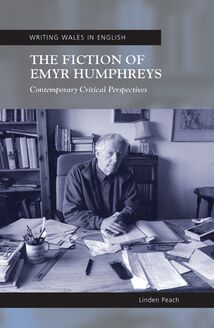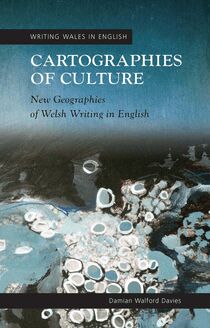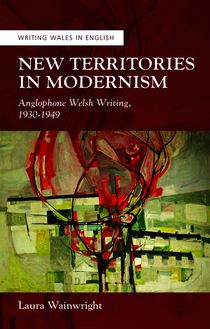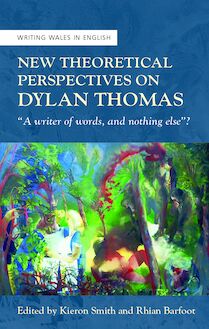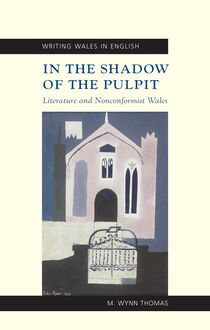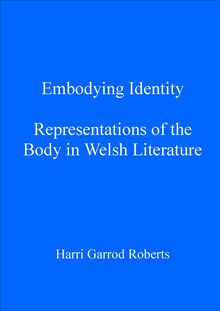-
 Univers
Univers
-
 Ebooks
Ebooks
-
 Livres audio
Livres audio
-
 Presse
Presse
-
 Podcasts
Podcasts
-
 BD
BD
-
 Documents
Documents
-
- Cours
- Révisions
- Ressources pédagogiques
- Sciences de l’éducation
- Manuels scolaires
- Langues
- Travaux de classe
- Annales de BEP
- Etudes supérieures
- Maternelle et primaire
- Fiches de lecture
- Orientation scolaire
- Méthodologie
- Corrigés de devoir
- Annales d’examens et concours
- Annales du bac
- Annales du brevet
- Rapports de stage
La lecture à portée de main
Vous pourrez modifier la taille du texte de cet ouvrage
Découvre YouScribe en t'inscrivant gratuitement
Je m'inscrisDécouvre YouScribe en t'inscrivant gratuitement
Je m'inscrisEn savoir plus
Vous pourrez modifier la taille du texte de cet ouvrage
En savoir plus

Description
Introduction: ‘Night-Bound Doubles’?: Louis MacNeice, Dylan Thomas and the 1930’s Chapter 1: ‘Poised on the edge of absence’: Louis MacNeice, Modernism and the 1930’s Chapter 2: ‘Death to Sense and Dissolution’: Dylan Thomas, Modernism and Surrealism in the 1930s Chapter 3: ‘The Woven Figure’: Louis MacNeice’s Ireland Chapter 4: ‘Here Lie the Beasts’: Dylan Thomas’s Monsters, Monstrous Dylan Thomas Chapter 5: ‘But One – Meaning I’: Autumn Journal’s Histories and Voices Chapter 6: ‘Crying with Hungry Voices in our Nest’: Wales and Dylan Thomas
Sujets
Informations
| Publié par | University of Wales Press |
| Date de parution | 01 octobre 2020 |
| Nombre de lectures | 0 |
| EAN13 | 9781786837264 |
| Langue | English |
Informations légales : prix de location à la page 0,0450€. Cette information est donnée uniquement à titre indicatif conformément à la législation en vigueur.
Extrait
Modernism from the Margins
Writing Wales in English
CREW series of Critical and Scholarly Studies
General Editor: Professor M. Wynn Thomas (CREW, University of Wales, Swansea)
This CREW series is dedicated to Emyr Humphreys, a major figure in the literary culture of modern Wales, a founding patron of the Centre for Research into the English Literature and Language of Wales , and, along with Gillian Clarke and Seamus Heaney, one of CREW ’s Honorary Associates. Grateful thanks are extended to Richard Dynevor for making this series possible.
Other titles in the series
Stephen Knight, A Hundred Years of Fiction (978–0–7083–1846–1)
Barbara Prys-Williams, Twentieth-century Autobiography
(978–0–7083–1891–1)
Kirsti Bohata, Postcolonialism Revisited (978–0–7083–1892–8)
Modernism from the Margins
The 1930s Poetry of Louis MacNeice and Dylan Thomas
Writing Wales in English
CHRISTOPHER WIGGINTON
© Christopher Wigginton, 2007
All rights reserved. No part of this book may be reproduced, stored in a retrieval system, or transmitted, in any form or by any means, electronic, mechanical, photocopying, recording or otherwise, without clearance from the University of Wales Press, University Registry, King Edward VII Avenue, Cathays Park, Cardiff, CF10 3NS .
www.wales.ac.uk/press
British Library Cataloguing-in-Publication Data
A catalogue record for this book is available from the British Library
ISBN: 978-0-7083-1927-7
eISBN: 978-1-78683-726-4
The right of Christopher Wigginton to be identified as author of this book has been asserted by him in accordance with sections 77 and 78 of the Copyright, Designs and Patents Acts 1988.
The publisher has no responsibility for the persistence or accuracy of URLs for any external or third-party internet websites referred to in this book, and does not guarantee that any content on such websites is, or will remain, accurate or appropriate.
C ONTENTS
General Editor’s Preface
Acknowledgements
List of Abbreviations
Introduction ‘Night-bound-doubles’: Louis MacNeice, Dylan Thomas and the 1930s
1 ‘Poised on the edge of absence’: Louis MacNeice, Modernism and the 1930s
2 ‘Our modern formula/of death to sense and dissolution’: Dylan Thomas, Modernism and surrealism in the 1930s
3 ‘The woven figure’: Louis MacNeice’s Ireland
4 ‘Here lie the beasts’: Dylan Thomas’s monsters, monstrous Dylan Thomas
5 ‘But one – meaning I’: Autumn Journal ’s histories and voices
6 ‘Crying with hungry voices in our nest’: Wales and Dylan Thomas
Conclusion ‘The judge-blown bedlam’: after the 1930s
Notes
Bibliography
G ENERAL E DITOR’S P REFACE
The aim of this series is to produce a body of scholarly and critical work that reflects the richness and variety of the English-language literature of modern Wales. Drawing upon the expertise both of established specialists and of younger scholars, it will seek to take advantage of the concepts, models and discourses current in the best contemporary studies to promote a better understanding of the literature’s significance, viewed not only as an expression of Welsh culture but also as an instance of modern literatures in English worldwide. In addition, it will seek to make available the scholarly materials (such as bibliographies) necessary for this kind of advanced, informed study.
M. Wynn Thomas,
Director, CREW ( Centre for Research into the English Language and Literature of Wales )
University of Wales, Swansea
A CKNOWLEDGEMENTS
In completing this book I owe a considerable debt of thanks to my friend John Goodby for offering generous encouragement, critical insight and personal support over the whole duration of this project.
For their help and support during the development and completion of this book I would like to thank the following friends and colleagues: in particular Richard Chamberlain, Gareth Downes, and Steven Vine for, respectively, pastoral, parabolic and monstrous discussions; and in general Lynn Dobbs, Victor Golightly, Medwin Hughes, Lian John, Marcus Leaning, Kevin Matherick, Steve Norris, Linden Peach, Rob Penhallurick, Harri Roberts, Berthold Schoene, Catrin Thomas, M. Wynn Thomas, Jeni Williams, Dave Woolley and Paul Wright.
Finally, thanks to my parents and brother for their patience and support over the years.
A BBREVIATIONS
References to works by Louis MacNeice and Dylan Thomas are included within the main body of the text. The following abbreviations are used followed by the appropriate page number(s): CPLM Louis MacNeice, Collected Poems , ed. E. R. Dodds (London: Faber & Faber, 1979) TSAF Louis MacNeice, The Strings Are False: An Unfinished Autobiography , ed. E. R. Dodds (London: Faber & Faber, 1996) CPDT Dylan Thomas, Collected Poems 1934–1953 , eds. Walford Davies and Ralph Maud (London: Dent, 1988) CLDT Dylan Thomas, The Collected Letters , ed. Paul Ferris (London: Dent, 1985) UMW Dylan Thomas, Under Milk Wood , ed. Walford Davies and Ralph Maud (London: Dent, 1995)
All other references are contained in numbered chapter endnotes.
Introduction
‘Night-bound doubles’: Louis MacNeice, Dylan Thomas and the 1930s
To return to the problems of the young poets of the 1930s: in changing social and political circumstances they were faced with forging their own poetry and poetics from their dual inheritance … What is fascinating, however, is the way poets from differing class and educational backgrounds reacted differently to their shared aesthetic inheritance, and thus produced differing varieties of hybrid which expressed distinct ideological nuances.
Adrian Caesar, Dividing Lines: Poetry, Class and Ideology in the 1930s 1
I see my night-bound double, slumped apart
On a conveyor belt that, decades high
In emptiness, can neither stop nor start
But first moves on for ever till we die.
It is too late for questions; on this belt
We cannot answer what we are or why.
Louis MacNeice, Autumn Sequel 2
In Canto XX of Autumn Sequel Louis MacNeice refers to the recently buried Dylan Thomas (figured throughout the poem as ‘Gwilym’) as his ‘night-bound double’. Whilst this phrase is revealing of a kinship in morose personality, it is also, more importantly, a notice of what separates MacNeice and Thomas, offering ‘Gwilym’ up as a poetic ‘other’ to Louis, and vice versa. Indeed, though Autumn Sequel reflects back panoramically upon a poetic map of Britain in the 1930s and after, it is upon ‘the bulbous Taliessin [ sic ]’ that the poem focuses most acutely ( CPLM , 404). There are, of course, biographical links to be made between Thomas and MacNeice. They were born less than a decade apart, Thomas in Swansea on 27 October 1914, MacNeice in Belfast on 12 September 1907. Both worked and lived in London for a substantial part of their lives. During their time in London, both worked for the BBC, and they met through this connection. Both might be thought of as refuseniks in the Spanish Civil War. Both were at the periphery of radical politics and neither was a fully paid-up member of the Communist Party. Neither fought in the Second World War. Both suffered premature death caused partly by drink. There are also crucial differences, though, which cannot be overlooked. MacNeice was the son of a minister, Thomas of a schoolmaster. While Thomas’s father wanted him to have an ‘English’ upbringing – organizing elocution lessons to erase his Welsh accent – MacNeice had a formal English education which culminated at Oxford University, from where he went on to teach classics, first at Birmingham University, and later at Bedford College, University of London.
Both Thomas and MacNeice emerged as poets in the early 1930s, a period of economic turmoil, social radicalism and the supercession of High Modernism by new literary styles. The New Signatures (1932) and New Country (1933) anthologies edited by Michael Roberts, and collections by poets represented in them – William Empson, William Plomer, Bernard Spencer, John Lehmann, Cecil Day Lewis, Stephen Spender – rapidly established a formally non-experimental, discursive, politically left poetic norm. Significantly, neither Thomas nor MacNeice appeared in either volume. And it is to their shared difference as 1930s poets that this book hopes to attend.
MacNeice and, in particular, Thomas continue to be marginal figures in literary histories of the 1930s, as is attested by recent critical work on the period. In their introduction to Rewriting the Thirties: Modernism and After (1997) Keith Williams and Steven Matthews write:
Our reason for putting this anthology together is that we thought it long overdue to challenge the persistent aftermyth of the thirties as a homogeneous anti-modernist decade. Outdated cultural maps of the time sustain a damagingly restricted canon centred on a narrow genealogy of polarised relations between aesthetics and politics, or between difficulty and accessibility. 3
Yet, in the whole collection of essays, Thomas is mentioned only twice, MacNeice less than a handful of times. If this seems like special pleading, the collection’s underachievement in the task it sets itself may also be apparent in its failure to consider women writers of the period adequately, confining them effectively to one chapter, entitled ‘Alien experiences’. In so doing, Rewriting the Thirties: Modernism and After is representative of critical studies of the literature of the pre-war decade. Lately, however, this particular imbalance has begun to be addressed. Janet Montefiore’s revisionary Men and Women Writers of the 1930s: The Dangerous Flood of History , for example – in many regards a response to questions raised by the same author about the critical orthodoxy of accounts of the 1930s in Feminism and Poetry: Language, Experience, Identity in Women’s Writing – addresses the critical neglect of writers such as Storm Jameson, Rebecca West and Sylvia Townsend Warner. Unfortunately, Thomas’s near-total omission from, and MacNeice’s partial marginalization in, critic
-
 Univers
Univers
-
 Ebooks
Ebooks
-
 Livres audio
Livres audio
-
 Presse
Presse
-
 Podcasts
Podcasts
-
 BD
BD
-
 Documents
Documents
-
Jeunesse
-
Littérature
-
Ressources professionnelles
-
Santé et bien-être
-
Savoirs
-
Education
-
Loisirs et hobbies
-
Art, musique et cinéma
-
Actualité et débat de société
-
Jeunesse
-
Littérature
-
Ressources professionnelles
-
Santé et bien-être
-
Savoirs
-
Education
-
Loisirs et hobbies
-
Art, musique et cinéma
-
Actualité et débat de société
-
Actualités
-
Lifestyle
-
Presse jeunesse
-
Presse professionnelle
-
Pratique
-
Presse sportive
-
Presse internationale
-
Culture & Médias
-
Action et Aventures
-
Science-fiction et Fantasy
-
Société
-
Jeunesse
-
Littérature
-
Ressources professionnelles
-
Santé et bien-être
-
Savoirs
-
Education
-
Loisirs et hobbies
-
Art, musique et cinéma
-
Actualité et débat de société
- Cours
- Révisions
- Ressources pédagogiques
- Sciences de l’éducation
- Manuels scolaires
- Langues
- Travaux de classe
- Annales de BEP
- Etudes supérieures
- Maternelle et primaire
- Fiches de lecture
- Orientation scolaire
- Méthodologie
- Corrigés de devoir
- Annales d’examens et concours
- Annales du bac
- Annales du brevet
- Rapports de stage
